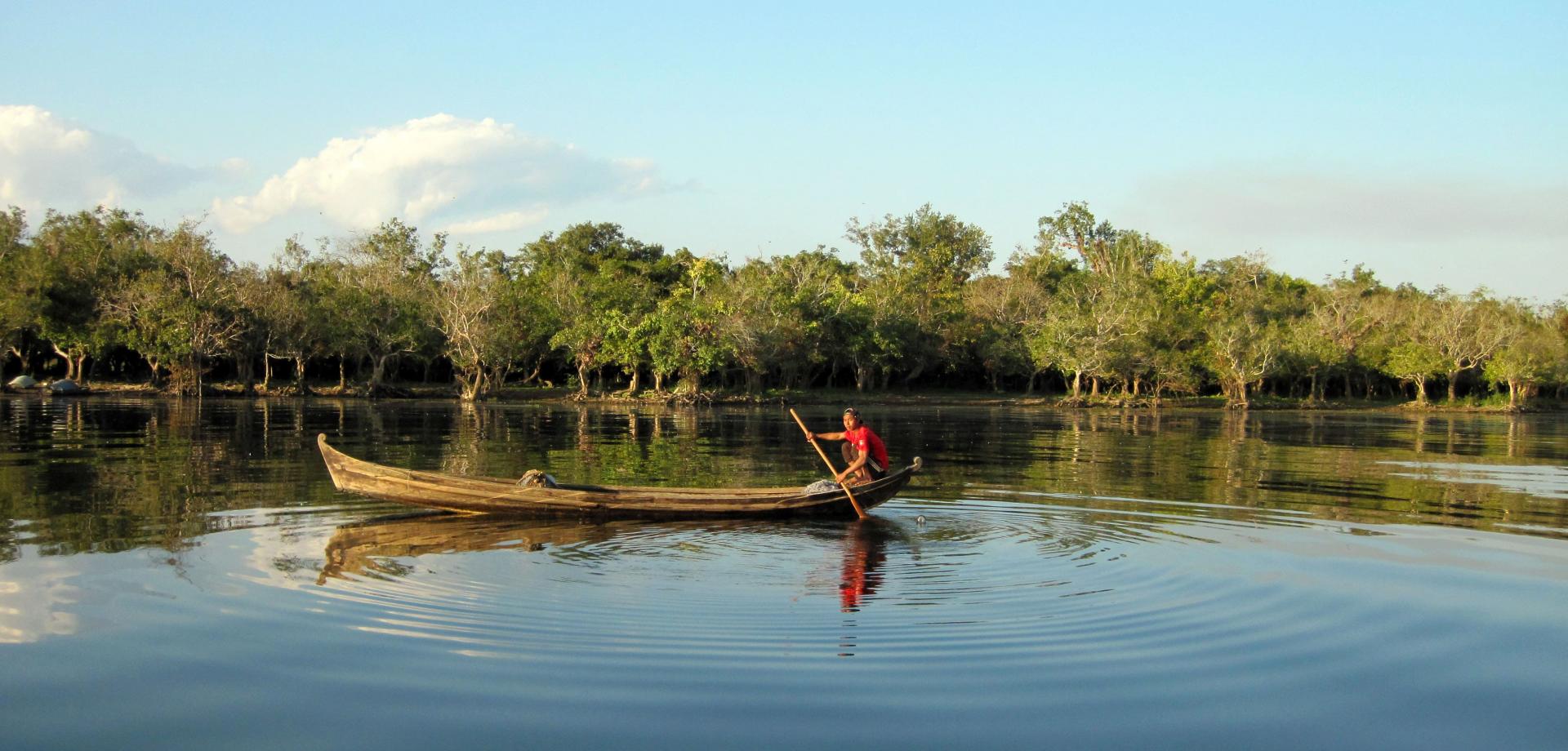The open water of majestic Indawgyi Lake stretches across 12,000ha and reaches up to 22m in depth. Myanmar’s largest lake hosts great fish diversity with 93 recorded species, of which two are endemic and six new to science. The local communities rely on the lake for freshwater and its fisheries for local livelihoods. Altogether eight streams drain from the surrounding mountains and feed Myanmar’s largest fresh water lake. The streams are significant for Indawgyi’s water quality, and in addition provide important habitats for the at least 13 species of amphibians, and 23 species of reptiles, including globally threatened turtles. The streams are less researched and might still hold many new discoveries.
The seasonally flooded grasslands are one of the most important habitats of the entire Indawgyi Lake basin and can be found along the lake shore and the outflow river, Indaw Chaung. The grasslands are an important breeding area for fish that migrates all the way up from the Irrawaddy River during the monsoon season. With so much food available, the grasslands are also an essential habitat for water birds such as ducks, goose and cranes. The extensive areas of herbaceous marsh are dominated by grasses and plants, which characterise the northern and southern shores of Indawgyi Lake. Especially the sparsely populated northern shore of Indawgyi is rich in biodiversity. The marshes are the ideal environment for the endangered Hog Deer, and an outstanding variety of water birds. Freshwater swamp forests were once embracing most of the lake but have given way for settlements, paddy fields, and grazing areas. Now only the western shore retains a narrow stretch of seasonally flooded forests where storks are perching for prey. Some of the trees also host colonies of Oriental darters and cormorants.

